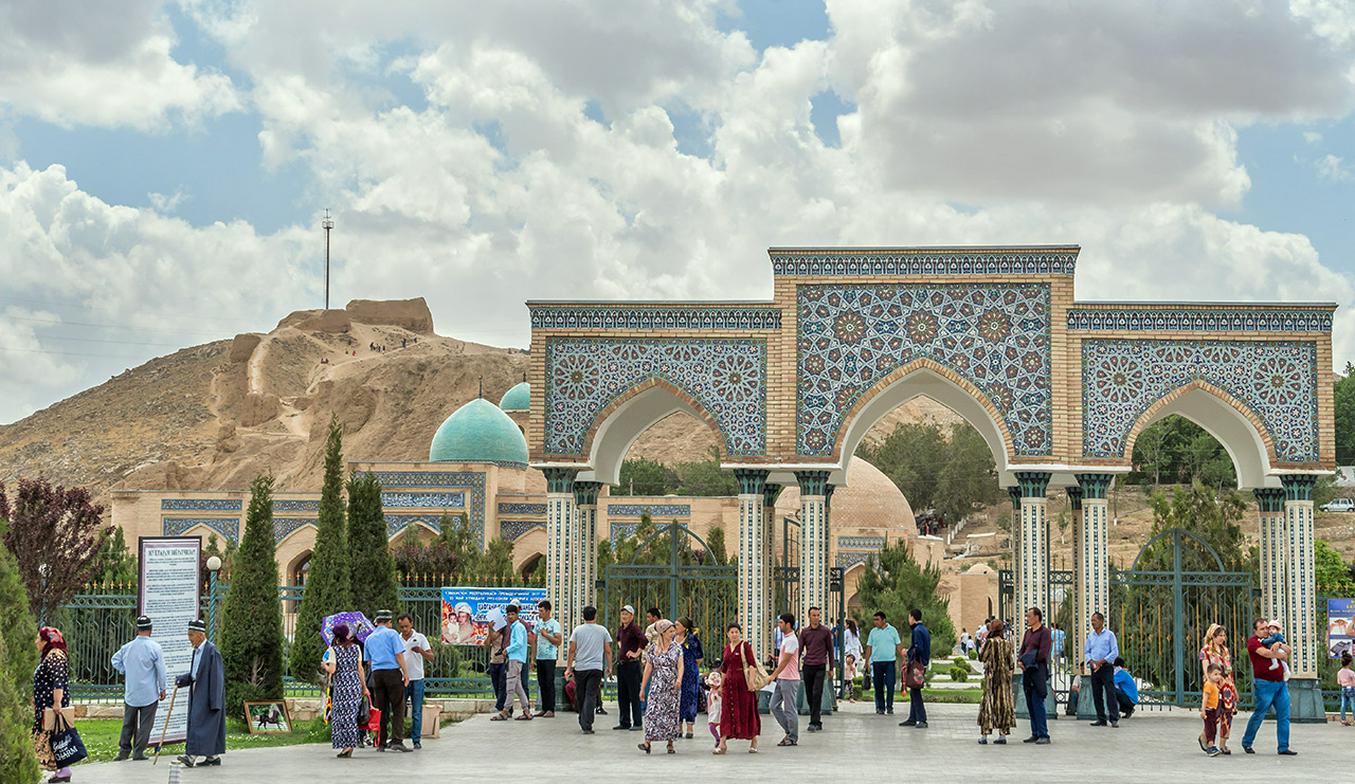
The Ferghana Valley (also transliterated as Fergana or Farghana) is historically the main Silk Road route between Kashgar and Samarkand. It is a relatively fertile, populous and prosperous area though much of the surrounding country is mountains, steppe or desert. Two rivers, the Naryn and the Kara Darya, flow into it from the east and merge to form the Syr Darya which runs through most of the valley and out to the west.
Andijan: History and Present Days
Ancient Andijan, surrounded by picturesque hills, is situated on the south-east of the Fergana Valley. This city is proud of its venerable age (2000 years) and of the fact that it is the hometown of Muhammad Zahiruddin Babur - the famous poet and commander, representative of the great dynasty of Tamerlane, the founder of the Mogul Empire in India. Today tourists can visit the house of Babur, remained in Andijan.
Historical records say about the large city on this site, which has grown up on the track of the Silk Road. It served as the eastern gateway of the Fergana Valley. On the whole route along the river of Karadarya there were caravanserais.
For the first time Andijan is mentioned in records of the 9th century. In the 9-10th centuries Andijan became a part of the Samanid State. In the 14th century, during the reign of Amir Timur, Andijan experienced rapid growth in all areas.
In the 16th century, Andijan was conquered by the Sheibanids, later it became a part of the Kokand Khanate. Since 1876, the territory of the Kokand Khanate, including Andijan, was included in the Russian Empire. At this time, the city produced a wonderful silk and cotton fabrics, which were famous not only in the Ferghana Valley, but far beyond its borders. In 1902 Andijan suffered from an earthquake, which destroyed a lot of ancient monuments.
The only main architectural monument - surviving a catastrophic earthquake in 1902 is the huge Jami Madrasah. Built in the late 19th century, this building is very impressive. Its length is almost 123 m. The complex occupies the area of 1.5 hectares, and includes a madrasah, mosque and minaret.
New central mosque, Modern Andijan is the large city of Uzbekistan, the largest center for engineering industry. Andijan has the automobile production plant, a number of other major companies: engineering, canning and dairy factories, flour mill, cotton mill, textile factory.
This beautiful sunny city becomes more attractive from year to year: new modern buildings are built, range of entertainment and shopping centers is growing. Andijan abounds in green gardens, parks and alleys.
Thirty kilometers away from Andijan there is the ancient settlement Ershi - the capital of the ancient state of Davan. Andijan region is well-known for its holy places. So-called Teshik-Tash boulder reminds straddling giant at the foot. Among other famous shrines Imam-Ota, Tuzlik Masar, Ok Gur, spring Shirmanbulak should be mentioned.
Fergana
The city of Fergana, in the south of the Fergana Valley is one of the youngest cities in Uzbekistan. It was founded in 1876, after Kokand Khanate had been included in the Russian Empire. A new town, named as New Margilan was built at a distance of 12 kilometers from Margilan, and became the center of the Fergana region.
The main building of the new city became a military fortress, which occupied a large area. New streets were laid from it in a semicircle. The huge park was lid out in the city center. The first architectural sights of the city were the Governor's House (now the building of the drama theater), House of Governor Assistant, the Military Assembly (House of Officers). In 1907 the town was renamed Skobelev, and in 1924 called Ferghana.
A marked increase in the city began only in the twentieth century and especially after the independence of the republic. Ferghana is now an important industrial center in Uzbekistan. Over the past few years in the city there are many modern facilities - luxurious high-rise hotels, a beautiful tennis court, indoor urban market, a stadium, a large park with flower beds and fountains. Symbolically, that among the first constructions built during the independence, in 1992 the city gate was built, called "Gate of Independence." It has the height of 14 meters, 26 meters in length.
In Fergana, there is no ancient architecture and historical monuments, but nevertheless the city is very picturesque and has its own unique look. The main decoration of the city is venerable trees: plane trees, poplars, oaks ... They have turned Ferghana in to the garden city.
Suburbs of Fergana are also known thanks to beautiful places. In the foothills of the Alai Range, abounded in the greenery of gardens and vineyards, the village Chimen lies, known for its healing mineral springs, on the base of which the spa resort "Chimen" was opened. It is the largest health resort in Central Asia.
55 kilometers from Fergana there is a picturesque area of Uzbekistan - Shakhimardan ("Lord of the peoples"). It is the traditional place of recreation for the citizens of Margilan and Fergana.
Namangan: large city in the Ferghana Valley
Namangan city dates back to the 17th century, when, in the north of the Ferghana Valley, a settlement for local salt miners of ores (naman kann) has appeared. In the 17th century after the devastating earthquake residents of Aksikent (Ahsykenta) moved here. Aksikent is the ancient city, which once was the center of the Fergana Valley. In the middle of the 18th century the city became the administrative center of the province (viloyat).
In 1875, Namangan became part of Russia. At that time the new city was laid under the regular plan. New city was separated from the old part by the fortress, from which, according to established order, streets were laid in a semicircle. In the early twentieth century, Namangan was the second most populous city and center of cotton processing in the Fergana Valley, and then the third largest in the country, after Tashkent and Samarkand.
Currently, Namangan is developed as the center of light and food industries. The city abounds in green orchards and parks. Not far from Namangan there are ruins of the ancient city of Aksikent. Archaeological researches state that the city had a citadel and strong fortifications. Trade and handicraft production was well-developed here. Before the thirteenth century Aksikent was the capital of the Fergana Valley. But then it was destroyed by the Mongols, and in the seventeenth century, the strongest earthquake destroyed it to the ground.
By Sher Karimov





